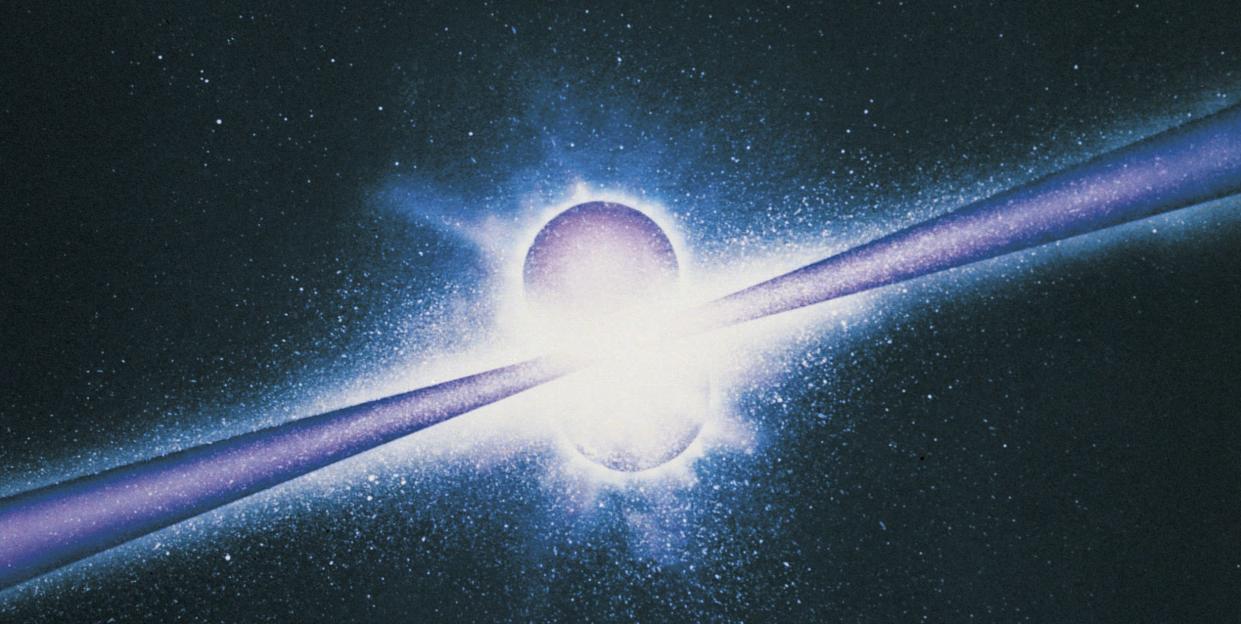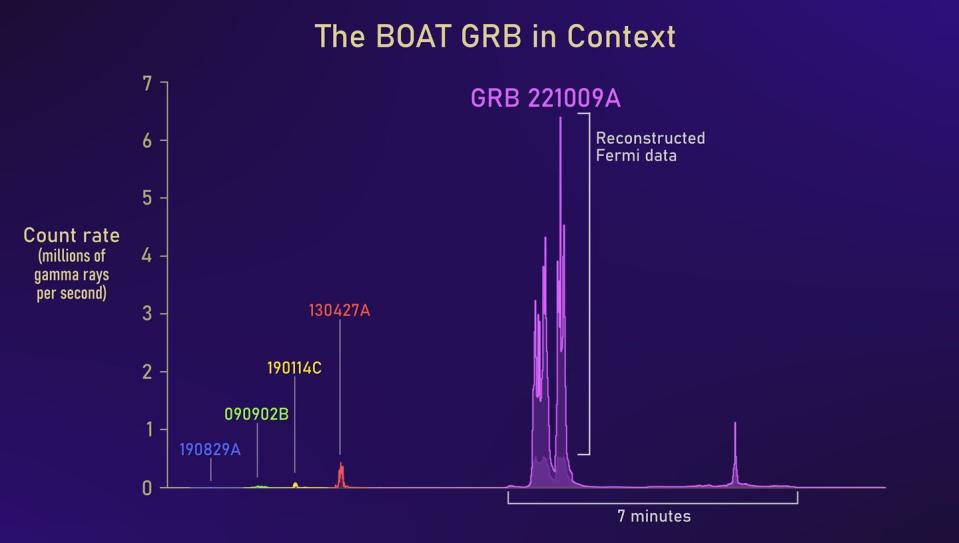Scientists Have Found the 'BOAT' Gamma Ray Burst—the Brightest of All Time

The brightest gamma ray burst ever detected recently reached our planet. It’s 70 times longer than any other burst we’ve spotted, and effectively blinded our instruments when it hit.
Researchers say that this is probably the brightest burst to reach Earth in all of human history, with an event like this happening about once every 10,000 years.
The burst has already been a gold mine of information, and scientists are hoping that further investigation of the data will provide even more insight into areas such as the formation of gamma ray bursts and the behavior of black holes.
A gamma ray burst (GRB) is the most powerful form of explosion in the known universe. They are produced when massive stars die, right before they turn into black holes, and were originally discovered by accident when the U.S. was trying to ensure compliance with the Partial Nuclear Test Ban Treaty signed in 1963. Though we’ve known about these bursts for some time now, one in particular has recently caught the attention of astronomers across institutions.
It's officially called GRB 221009A, but it frequently goes by another name: the BOAT—Brightest Of All Time.
To be fair, it’s probably not the brightest of all several billion years of cosmic history. It’s not even unusually powerful for a gamma ray burst. It just happens to check two boxes at the same time: it’s narrowly focused and it’s pointed almost directly at us. We’re basically being blinded by this explosion’s high beams.
But regardless of inherent power, it’s definitely the brightest GRB we’ve ever seen, and researchers are pretty sure it’s the brightest in the history of human civilization. When discussing what they’ve extracted from the data on this burst (which has been written up in a whole collection of papers) at the recent High Energy Astrophysics Division meeting of the American Astronomical Society, researchers announced that a burst like this probably happens about once every 10,000 years.

The brightness of this event really can’t be exaggerated, but we actually can’t even directly measure the exact intensity with which it hit. After traveling for 1.9 billion years to reach Earth—oddly enough, making it one of closest GRBs of its type ever seen—the BOAT functionally blinded most of our space-based gamma ray detectors. International teams of astronomers were eventually able to determine that the BOAT was 70 times brighter than any other GRB we’ve ever seen. They estimate a burst that bright only happens about once every 10,000 years.
And that’s not the only thing weird about this burst. Usually, the detection of a GRB is followed up by the detection of a supernova. But with the BOAT? Nothing—even though they were looking for it with the best telescopes for the job, Hubble and JWST.
“We cannot say conclusively that there is a supernova, which is surprising given the burst’s brightness,” Andrew Levan, an astrophysicist from Radboud University in Nijmegen, Netherlands, said in a press release. “If it’s there, it’s very faint. We plan to keep looking, but it’s possible the entire star collapsed straight into the black hole instead of exploding.”
The absence of a supernova may also be due to the fact that the BOAT had to fight its way through a large amount of space dust to get to us. The weaker light from the supernova may be totally blocked by that same dust.
But material getting in the way of an explosion isn’t always bad. When the light from the BOAT hits the debris around the dead star that produced it, it produces what is called an afterglow. This afterglow shows up in multiple wavelengths and helps us understand what’s really going on inside a gamma ray burst. Or at least, try to understand it better.
“Being so close and so bright, this burst offered us an unprecedented opportunity to gather observations of the afterglow across the electromagnetic spectrum and to test how well our models reflect what’s really happening in GRB jets,” said Kate Alexander, an astronomer from the University of Arizona, said in a news release. “Twenty-five years of afterglow models that have worked very well cannot completely explain this jet.”
Material being in the way of light is also helpful for other research teams. That dust potentially blocking out a supernova? It turns out it’s a bit of a gold mine for scientists studying the behavior of X-rays. They were able to detect X-ray “light echo” rings that had bounced off 21 different clouds of space dust, providing insight into how GRBs form in the first place.
Despite already unlocking this much new information, there’s still more to discover when it comes to the BOAT. Researchers are hoping the data gathered on this blast will provide insight into whether or not black holes actually give power back to the universe, rather than just swallowing everything up. And other teams are investigating whether or not the jets were powered by the magnetic fields created by the spin of a black hole.
Even in space, it’s always exciting to watch the GOAT—or the BOAT—in action.
You Might Also Like


